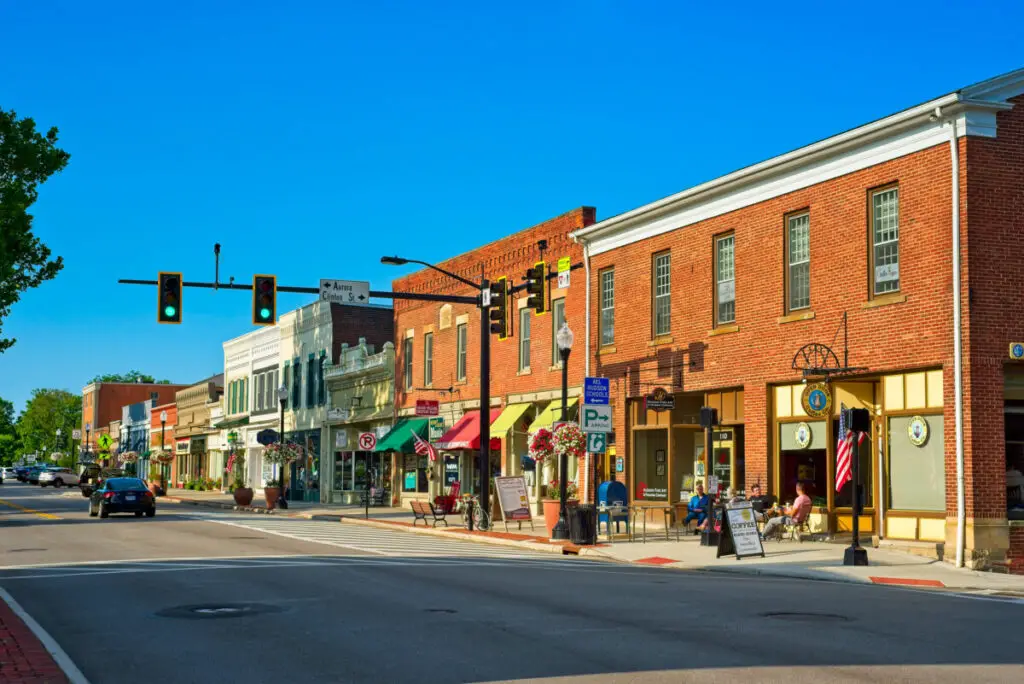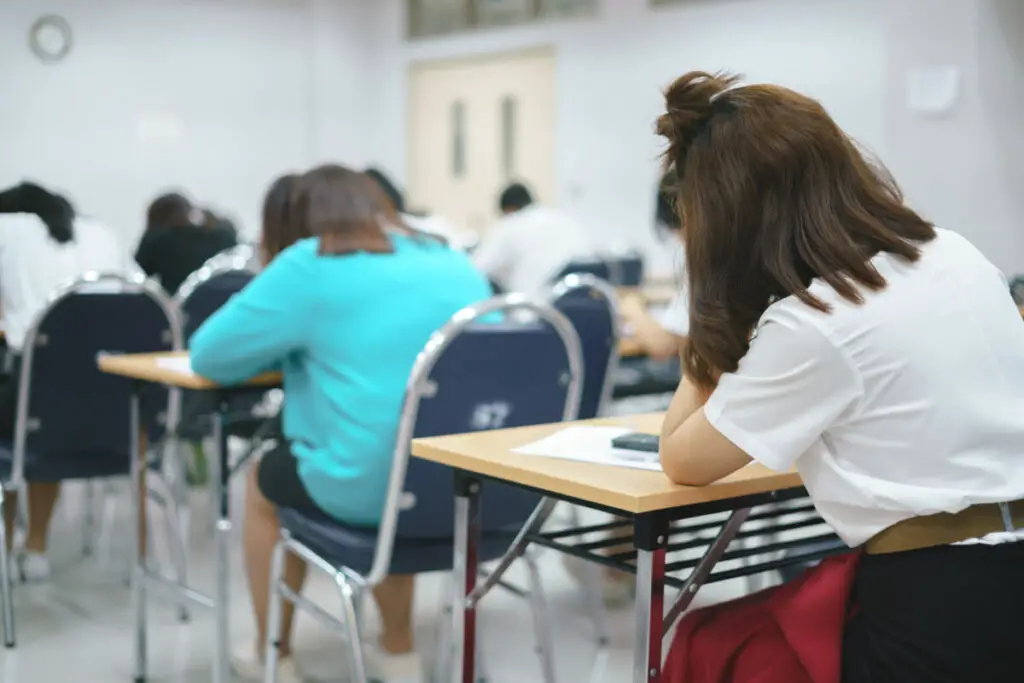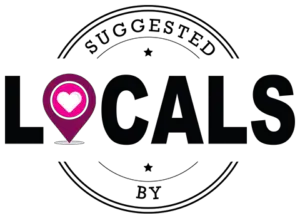
Springville, Utah, also known as Art City, is a growing town in Utah County with an old town charm that draws in outsiders, but locals in this city have several complaints and reasons why you should NOT move here.
If you’re thinking of moving to Springville, Utah, here is a list of 17 cons to living in this city that you should consider before doing so. Just know that if you continue reading, you may change your mind about moving to Springville.
1. The City is Too Crowded
Many locals of Springville and the surrounding cities complain that Springville is too crowded, both on its roads and in its public spaces.
There was a time when surrounding cities like Spanish Fork and Mapleton didn’t have a Walmart, so the Springville Walmart was overcrowded at all times. Now, even after the Spanish Fork Walmart was built, the Springville Walmart still experiences overcrowded store lanes and long lines at checkout that slow down your shopping experience and make you extremely frustrated.
While there are plenty of parks and museums and old stores to explore and spend time in, they still don’t accommodate the high population and amount of people who want to spend their leisure time outside of the home.
At Springville Reservoir, where locals go to lay on the sand, fish, go kayaking, or swim, there is almost nowhere to sit as every inch of the beach is occupied and the water is full of people.
2. Too Much Traffic and Too Many Bad Drivers
The roads in Springville, according to locals and visitors, are constantly backed up with bumper-to-bumper traffic. Drivers follow too close and cut each other off so regularly that it almost seems like you have to fight for your life on the road.
While this activity is common for much of Utah, the highly dense population makes close calls more common, especially in higher populated areas.
3. Higher Crime Rate Than Neighboring Cities
Particularly within the downtown areas along Main Street and Center Street, Springville has a crime rate of 13 per 1,000 people .
.
While the crime rate in Springville is average for Utah and low for the United States in general, if you are choosing which city to live in based on safety, Mapleton will be your best bet.
4. Property Costs Are Higher Than Most of Utah
While the cost of living in Springville is within the average for Utah, it is high in comparison to the average cost of living in most of the United States. The cost of owning and renting a property in Springville, on the other hand, is high in comparison to most of Utah.
For example, the average monthly cost to rent a 3-bedroom home in Springville is $1,500 as opposed to the Utah average of $1,200 per month for a 3-bedroom home. Only about 69% of adult residents own a home, so just over 30% of residents are living in rentals.
5. Limited Public Transportation

Most major cities in Utah utilize Utah Transit Authority’s bus, train, and public transit system. Springville has a total of 7 bus stops throughout its entirety, each of which is clustered along main street and downtown Springville. So, if you want to get from one end of main street to the other end without walking or driving, the bus is an option, but it won’t take you anywhere east or west of Springville.
While Provo isn’t too far from Springville, it doesn’t run through Springville. If you need to get to Salt Lake City, Ogden, or somewhere in between by train, you will need to drive to the Provo Station or take the bus to the Orem station, as Springville buses do not stop at the Provo train station.
6. No Movie Theaters
If you want to take your family or friends out to see a movie at a local theater without having to get on the freeway, you are out of luck. There are no movie theaters in Springville, and the closest theaters are the Cinemark in Provo or the Cinemark in Spanish Fork.
While you can take the back roads to one of these theaters and avoid the freeway altogether, it is still too far and out of the way for you to make a quick trip to the movie theater. If you want to stay in town, the closest option to seeing a feature film is to attend the showhouse, where physical plays are put on stage instead of the movies you want to see on the big screen. While theater buffs may really like this, movie lovers will hate the fact that they have to drive for at least 15 minutes to watch a movie in the theater.
For a city that prides itself in its arts, it’s a bit odd that there is nowhere in town for residents to watch a film.
7. No Room for Growth
Because a good portion of the city is covered by mountains, a large amount of the population is densely packed onto the flat land. This means that more people are packed into a smaller area, meaning more homes need to be built as more people start moving in, yet each home is spaced far apart to accommodate large yards, so there is less room for new homes to be built.
Other than a few corn fields, there isn’t any available land for homes to be built to prepare for new people moving into the city, so either these corn fields will need to be used for building more homes, ruining the air quality and taking away farming jobs, or the older homes will have to be torn down and the land used to build townhomes or apartment complexes.
Yet, the small geographical area of Springville is already densely populated, so creating more housing will only increase that problem.
8. So Many Drug Busts
Locals often complain of seeing homes surrounded by police, often because someone in the home was caught making or harboring illegal drugs. If you type into a Google search bar “Springville Utah Drug Bust” you will find a long list of results for these things happening in the city. It’s obvious that this is such a common problem for Springville that it can be concerning to those looking to move their family into the city.
Drug busts increase crime rates and the number of these happening confirms that there is a drug problem in the city, and these illegal substances often cause users to commit more crime, thus increasing the crime rates and making Springville an unsafe place to live.
9. Low Ethnic Diversity
With a population of about 33,000 people in 2019, about 79% were caucasian non-Hispanic and another 12% were caucasian Hispanic. Less than 10% of residents of Springville are not caucasian.
This means a large majority of the population is caucasian, and if you are not caucasian and are planning on moving to Springville, you won’t find much representation of those of your same ethnicity or race. If you are caucasian and move to Springville, you aren’t going to find a diverse blend of races, cultures, or experiences to learn from.
10. Poor Education Score

Less than half of the students at Springville High School scored proficient in Math and Language Arts testing, and test scores were 6 percent lower than the national average. Schools in Springville received a D+ rating by areavibes.com .
.
An average of 19% of Springville residents graduated from high school compared to the Utah average of 23%. These statistics may make new and potential residents question the quality of education that schools, especially high schools, provide in Springville and wonder why the city’s graduation rates are a bit lower than average for the state.
that schools, especially high schools, provide in Springville and wonder why the city’s graduation rates are a bit lower than average for the state.
Currently, there is only one high school in Springville, which means that if parents or students are not impressed with the quality of education or the teachers at Springville High, they will have to transfer their kids to a school that is out of town, which is incredibly inconvenient.
11. Low Religious Diversity
While this is true for much of Utah, a large majority of residents in Springville are part of the Church of Jesus Christ of Latter-day Saints (LDS) church. Dwellics estimates that 88.7% of residents are members of the LDS church. This may defer those of other faiths from moving to Springville, as there won’t be many people with the same beliefs or cultural practices to surround themselves with.
estimates that 88.7% of residents are members of the LDS church. This may defer those of other faiths from moving to Springville, as there won’t be many people with the same beliefs or cultural practices to surround themselves with.
Only about 1.3% of residents are Catholic, 0.6% are Protestant, and 0.3% are Hindu. There are no percentages for those who identify with the Muslim, Jewish, or other faiths, meaning it will be difficult for those who practice these religions to find a community in Springville and will instead need to find them elsewhere.
12. Hot and Dry Weather in the Summer
In the summer months, temperatures almost never stoop below 90 degrees Fahrenheit during the day until February. As it was once a desert land, Springville still suffers from a dry atmosphere, especially in the warmer months, and rainy weather is rare.
Located inside what Utah County locals call “the Utah dome,” where the land is surrounded by a circle of mountains, air pollution stays trapped inside this dome and is unable to spread out or escape into the stratosphere. While air pollution is a problem for all of Utah County and much of Utah, other cities have come up with solutions to reduce air pollution.
The air quality cannot be avoided in Springville, especially considering the density of traffic in downtown Springville and the many factories pumping fossil fuel and emissions into the air.
13. Low Age Diversity
A vast majority of residents living in Springville, Utah are under the age of 65, with a large portion of these people being children. Only about 8% of residents are over the age of 65, so unless these residents are living in an assisted living facility, they likely won’t be able to find friends who are their age.
14. Low Walkability Score

Springville only has a walkability score of 28 out of 100 , which is quite dismal. These scores are determined by how easy it is to do errands around the city by foot, including the distance between homes and public spaces as well as the presence of streets that accommodate pedestrians and cyclists.
, which is quite dismal. These scores are determined by how easy it is to do errands around the city by foot, including the distance between homes and public spaces as well as the presence of streets that accommodate pedestrians and cyclists.
If you’ve ever driven through Springville, you may have noticed there are almost no pedestrians on the sidewalks and very few bike lanes for cyclists. This may deter those who prefer other ways to get around besides driving from moving to Springville, or those who want the extra exercise of walking to do their errands.
15. Older Buildings are Falling Apart
According to one review on Niche , the city invests most of its money into expanding the city and building new buildings and not into preserving its historical buildings. Because these buildings aren’t kept up, they’ve started to fall apart.
, the city invests most of its money into expanding the city and building new buildings and not into preserving its historical buildings. Because these buildings aren’t kept up, they’ve started to fall apart.
The city has also put less funding towards repairing roads and landscaping in older and poorer areas of town, so depending on where you end up living, the city’s upkeep may be poor if you move into an older area of town.
The historical look of downtown Springville is what gives the city its charm and what attracts visitors and new residents, but without the upkeep of these older parts of town, Springville will begin to lose that charm and history.
16. Low-Quality Restaurant Food
Many locals have complained that while the majority of food options are fast food, local small business restaurants are low quality, so many residents opt to drive up north to Provo or Orem for better-tasting food. Even these low-quality, unmemorable restaurants have been said to be overpriced.
17. High Unemployment
The unemployment rate for Springville is 3.7, which is higher than the average unemployment rate for the state of Utah. This means that job security is scarcer than in surrounding areas and it may be more difficult for residents of Springville to find a job in town. So, if you decide that you want to move to Springville, Utah, make sure you have a job before you actually move, or you might be unemployed for months on end.
